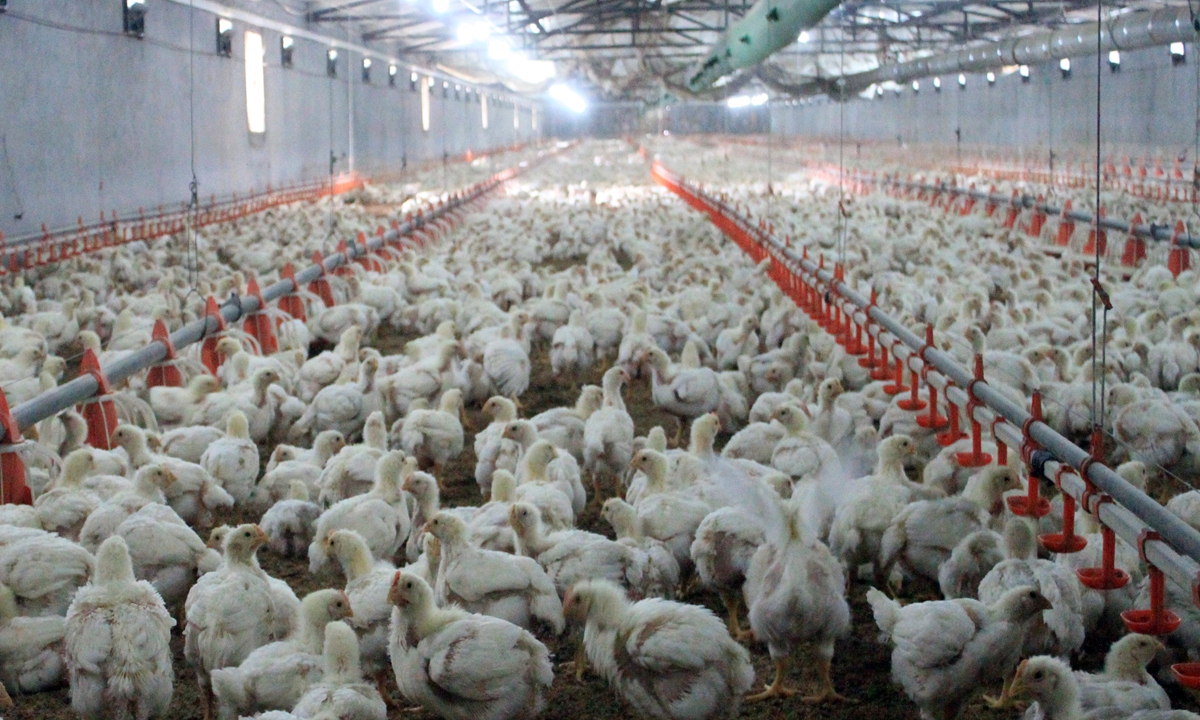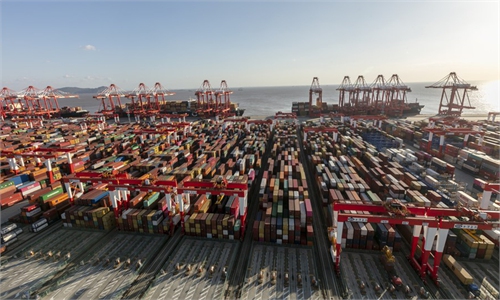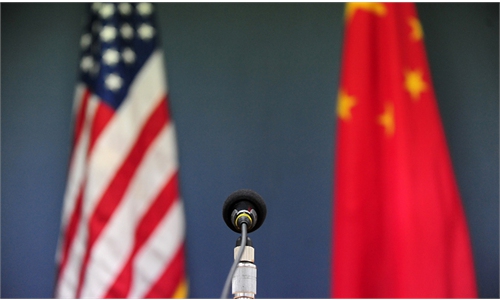Meeting Chinese people’s demand for better cuisine means good business for US companies

White feather broilers. Photo: VCG
When traveling in South China's Guangdong Province not long ago, I heard my friends talk about chicken in Cantonese cuisine countless times. The locals always said, "no chicken, no feast."In fact, if you had more experience tasting China's various cuisines and flavors, you would understand that this hyperbole is nothing more than Cantonese people from Guangdong showing off how delicious the chicken they cook is. In fact, chicken is an essential ingredient in recipes all over China and is prepared in various ways.
Guangdong is the most developed province in China, with a GDP per capita of over $15,000, where the population consumes 800 million chickens annually.
According to the relevant statistics, in 2022, the domestic consumption of chicken in China was 14.6 million metric tons, with the average person eating 10 kilograms. As the old Chinese saying goes, food is the most important for people. Food security is an essential issue at every year's two sessions.
That's why all levels of government in China have a "shopping basket" program. One of the government's primary responsibilities is to keep people's food baskets with stable supply and at reasonable prices.
When the Chinese have more and more variety of dishes on their dining table after enough food and clothing, chicken becomes an essential food item.
A friend in Guangdong who is engaged in chicken farming told me that more than half of the chickens the Chinese consume are white feather broilers. Data show that in 2021, 5.81 billion white feather broiler chickens were bred and sold in China, and all the breeding sources of such broilers depend on imports.
The grandparent chickens that cannot be kept for breeding and expansion are introduced from abroad, which is the monopoly of foreign broiler breeding companies.
In 1980, white-feathered broilers were introduced to China from abroad. These broilers grow faster, reaching a weight of about 2.8 kilograms in 42 days of breeding, and soon took up half of the Chinese market.
Since 2009, Chinese institutions have begun independent research into developing white feather broiler breeds. Last September, the Chinese Academy of Agricultural Sciences set up a white feather broiler research center. Now there has been a breakthrough. By 2030, the domestic share of China's independently bred white feather broiler is expected to exceed 50 percent.
A friend who works in Foshan, another city in Guangdong Province, near Guangzhou said whenever someone mentions Foshan, people will automatically think about its manufacturing industry. In fact, Foshan also has become a significant base in China in terms of research and breeding, and production of quality poultry.
Quality chicken breeds need a quality breeding environment. The development of chicken farming has promoted progress in environmental protection, water conservation, the feed industry, biology and molecular breeding, and many more related fields. Therefore, it is already an industry closely associated with China's sustainable development and a necessary foundation for China's agricultural strides to the global forefront.
The chicken breed issue is related to whether 1.4 billion Chinese can eat better and is associated with the food security issue, which can only be guarded and solved by the Chinese. The Chinese can't depend on foreign companies to ensure we can eat delicious food.
Developing Chinese breeding technology does not mean China will eventually stop importing chicken products from abroad; instead, China's chicken imports will continue to increase as the Chinese eat better.
The Chinese market will continue to be the largest market for global poultry exporters. The expansion of choices in this market creates more opportunities for foreign companies that are leaders in poultry technology. This is the kind of competition that makes sense and continues to improve the quality of global development.
It is worth mentioning that China continuously imports chicken products from the US. Only the US' exports of chicken paws to China accounted for 13 percent of total US poultry and product exports in 2021, a product for which there is virtually no other significant market except China.
What the Chinese eat, how they eat it, and whether the meals on the table will become more diverse affects the US' economy and its high-tech competitiveness.
Unfortunately, the changes brought about by the development of China's food industries have yet to be noticed by Washington strategists focusing on chips in defining their strategy toward China, where competition means containment. If all the US politicians think about is containing China's development rather than how can meet the needs of the Chinese for a better life, then it is hard for the US to continue to profit from China's development.
The author is a senior editor with People's Daily, and currently a senior fellow with the Chongyang Institute for Financial Studies at Renmin University of China. dinggang@globaltimes.com.cn. Follow him on Twitter @dinggangchina



